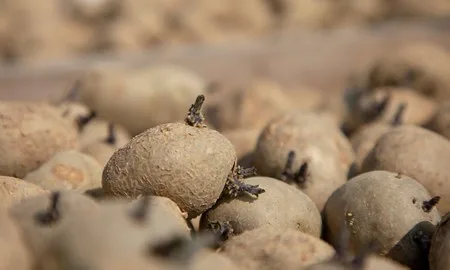
Clarity of focus coupled with modest, but realistic expectations explain the first-year success of the Potato Partnership, says James Wrinch, director of East Suffolk Produce and a TPP founding partner.
Author
| 1st April 2023Tags
The Potato Partnership - a successful first year, but what’s next?
In agriculture just as in other areas of business, trials are essential to advancing new ways of working that deliver progress. For the founding partners of the Potato Partnership (TPP) it was the recognition that without trials, growers were unlikely to find the answers to some of the most pressing disease and pest threats facing the industry.
“Part of our success owes much to the clarity of purpose that brought us together. We have been clear about our objectives, but just as importantly, we know what we are not about. Our focus is on agronomic trials, not crop marketing or lobbying government,” Mr Wrinch says.
In practice, the trials have focussed on finding new ways to use the products and methods already in use to promote better results with issues such as PCN, wireworm and virus and improve certain aspects of nutrition.
It’s been a positive first year, with the TPP claiming to have achieved much of what it set out to do. “It’s not been without its challenges. We are indebted to the host farms and the trials partners for their contributions, but it has been a productive start,” Mr Wrinch says.
The challenge is to build on this performance, but to add weight to what has been achieved, the group needs more partners.
“In the immediate short term, we plan to replicate the work performed in 2022, but with more partners we can add value to the dataset. More trials in other regions would enable us to consider how local factors influence outcomes. By pooling and sharing our data, we stand a greater chance of finding the answers we are looking for,” Mr Wrinch says.
James Wrinch - East Suffolk Produce
At the start of the year, the group embarked on a series of regional meetings to share its findings. These were well received and in addition to encouraging others to form similar partnerships, they also served to highlight what can be achieved when partners with a shared philosophy come together.
“We have shown in a highly demonstrable way what can be achieved post-AHDB Potatoes and are proud to have furthered the conversation. The interest we have attracted demonstrates that there is a desire among growers for initiatives such as the TPP in other regions,” Mr Wrinch says.
Focusing on the applied
In several areas, the trials were expanded to consider how potential new products compare with existing best practice and how these might fit into a crop protection strategy.
The ability to consider pipeline material that may be three to five years away from receiving regulatory authorisation has prompted some to suggest that the TPP should be seeking to broaden its horizons through closer ties with academia. A suggestion Mr Wrinch says would take TPP away from its core focus.
“It's an understandable reaction, but the reality is we are already are, albeit not directly. We have a developing relationship with Cambridge University Potato Growers Research Association (CUPGRA), of which I sit on the executive board, and through Agrii, which as a primary researcher has working relationships with many academic institutions,” Mr Wrinch says.
“The focus of the TPP, however, is on the practical. This is a step removed from that of most academics which tends to be on what’s over the horizon,” he adds.
Instead, he believes, the focus should be on promoting the benefits of greater collaboration.
“We need to do more to help ourselves. For instance, Lanorma when grown in Scotland tends to increase populations of PCN whereas in southern England, it delivers a reduction. This is on sites with similar population profiles, so it may be that pathotype has a bigger influence on performance than has so far been considered. This warrants investigation, but would be more worthwhile if done in collaboration,” he says.
The same could be argued for wireworm. The UK population is largely made up of three species of Agriotes but little is known about their distribution or differences in behaviour. There are other threats to production that while outside the scope of the TPP, the industry needs to face up to, he believes.
“The Fight Against Blight project performs essential work that informs how we manage the threat of late blight, but its future is in doubt because of a lack of funding. There are still some who believe that such initiatives should be funded by government, but it seems incongruous to me that others should be expected to pay for work that we consider necessary if we are not prepared to fund it ourselves.
“Similarly, if we were to lose mancozeb then Alternaria is likely to rise in importance. These are issues that we cannot afford to keep ducking in the hope that others will ride to our rescue. As an industry we have a responsibility to take a greater interest in our future or we risk seeing it slip away,” says Mr Wrinch.